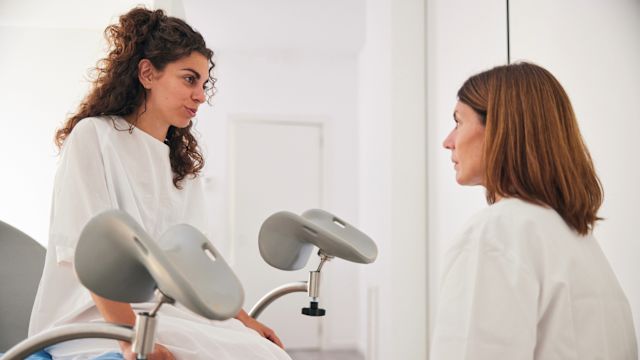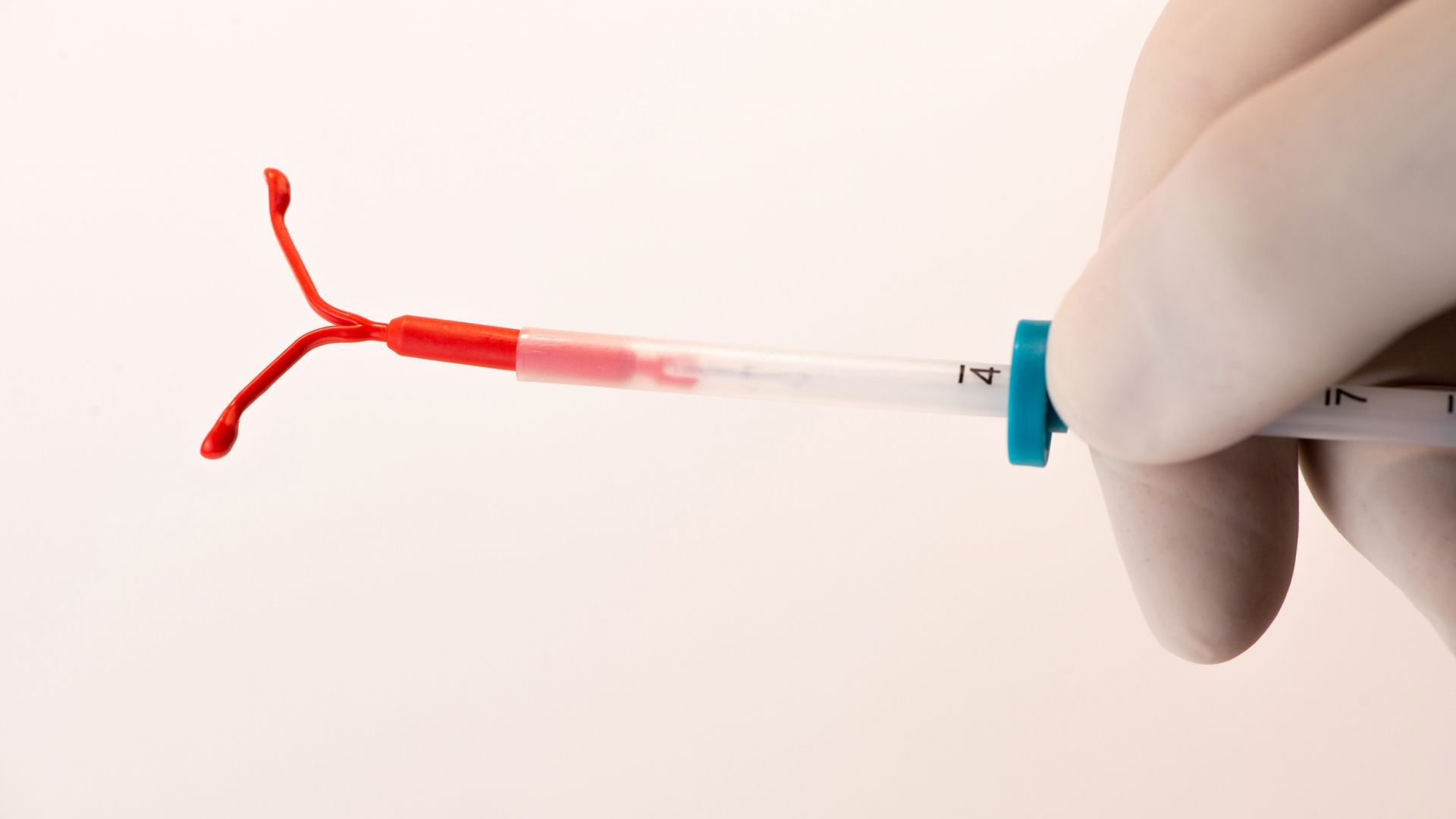Updated on March 25, 2025
An intrauterine device, often referred to as an IUD, is a type of long-acting reversible contraception. An IUD is a small, T-shaped device that is inserted into the womb. It is flexible and made of plastic.
Some IUDs contain and release a progestin (a synthetic version of the hormone progesterone) called levonorgestrel. This synthetic hormone thickens cervical mucus and thins endometrium (the lining of the uterus). Some also suppress ovulation. Depending on the specific IUD being used, a hormonal IUD can prevent pregnancy for 3 to 8 years.
Another type of IUD contains copper, a substance that impairs sperm’s ability to survive in the female reproductive system. Depending on the specific IUD being used, a copper IUD can prevent pregnancy for up to 12 years.
Both types can be removed at any time by a healthcare provider.
How is an IUD inserted?
An IUD must be inserted by a healthcare provider. This procedure can be done in a healthcare provider’s office and typically takes between 5 and 10 minutes.
Here is an overview of the procedure:
- A healthcare provider will perform a pelvic exam (similar to the exam performed at an annual gynecological visit).
- A speculum will be used to hold the vagina open for the procedure.
- A cleaning solution will be used to prevent infection.
- A local anesthetic (numbing agent) may be applied.
- A device called a tenaculum will be used to hold the cervix in a stable position for the insertion.
- A device called a uterine sound will be used to measure the depth of the cervix and check for any issues that may prevent insertion.
- A plastic insertion device will be used to pass the IUD through the cervix and into the uterus.
- An IUD has two strings, which help a healthcare provider confirm the positioning of the device. These will be trimmed once the IUD is in place.
A healthcare provider can go over these steps in more detail.
Will an IUD insertion be painful?
Pain is a topic that often comes up in discussions about IUD insertions, and the possibility of pain is something that a healthcare provider will discuss when you are making a decision about using an IUD.
A person may experience pain during the insertion procedure, or they may experience only slight discomfort. Everyone’s experience is different.
Pain during an IUD insertion can range from mild discomfort and pressure to severe cramping. This can occur when the IUD reaches the uterus, which can trigger contractions in the organ’s muscles. The pain is also described as a pinch, similar to a pap smear—though a bit sharper and taking a little longer than a pap smear.
This pain typically begins to subside quickly after the IUD is in place. Cramps and spotting can occur after an IUD is in place, and these symptoms are another important topic to discuss with a healthcare provider.
What steps and strategies can minimize pain?
While pain is a possibility, there are steps you and your healthcare provider can take to reduce and minimize pain during an IUD insertion.
Pain and other expectations should be discussed before the procedure. Tell your healthcare provider if pain is a concern and if you are nervous. Some strategies that you and your healthcare provider can discuss:
- Using a local anesthetic during the procedure (mentioned above).
- Taking an over-the-counter pain medicine before and/or after the procedure.
- Steps to reduce anxiety about having the procedure. If you’re anxious, tell your provider, communication is always important. In some cases, medication to reduce anxiety may be recommended.
- Twilight sedation (anesthesia that puts a person in a relaxed, semi-conscious state) or general anesthesia (where a person is unconscious) may be used at hospitals and some medical clinics, though this approach is less common.
A healthcare provider will also guide you on steps to take to manage any pain that occurs in the days following an IUD insertion, as well as guidelines on general care, recovery, if you need a backup method of birth control for any period of time, and side effects to watch for.
Ask questions. Bring up your concerns. Tell your healthcare providers if you are nervous about getting an IUD.
Remember that IUDs are among the most commonly used methods of contraception in the United States. Over 10 percent of females between the ages of 15 and 49 have an IUD, and this percentage is higher among ages 20 to 29.
Also remember that overall patient satisfaction with IUDs is high, and studies have found that people who have an IUD often say the advantages of the contraceptive were worth any discomfort during the procedure.




